Spotify, Apple Music, Deezer, TIDAL… Their names are well-known and have long dominated the streaming world. But other players are nibbling away at market share. One of them is YouTube Music, and it’s fair to say that the platform has a lot going for it. So much so that one can wonder which to choose between YouTube Music and Spotify, the market leader.

We’ve noticed that our “versus” articles are among your favorites on our blog. We’ve compared TIDAL and Qobuz, YouTube Music and Amazon Music, and Spotify and Deezer. Now it’s time for Youtube Music VS Spotify, and as always, we start with a short introduction before detailing the pros and cons of each platform on specific points.
Which to choose between YouTube Music and Spotify? Soundiiz tells you all you need to know!
For your information, Spotify does not authorize the transfer, export, or synchronization of playlists made by Spotify itself (like “Spotify’s Top 50”, for example). But don’t worry: any playlists you’ve created on Spotify can still be exported, transferred, and synchronized with Soundiiz!
What’s the difference?
Spotify is not a new service. It will be 15 years old in 2023 and was launched in 2008 by Daniel Ek and Martin Lorentzon. Its expansion has been rapid, and today it is the world’s leading streaming service. This advantageous position is due to massive investment in its algorithm, user experience, and the podcast sector, where Spotify has positioned itself faster and more strongly than its competitors. By the end of 2022, 433 million people were using Spotify.
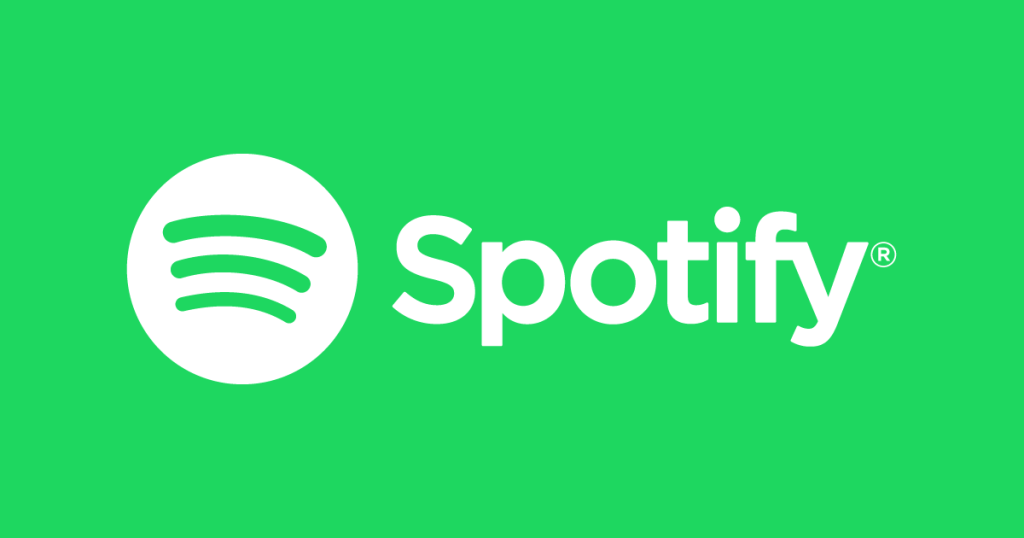
The service does have one drawback, however. It is one of the services that pay artists the least, according to a study published by MusicianWave.com in August 2022, and the artists themselves often criticize this state of affairs. Spotify is the market leader, and a little effort could enable artists, especially those with the most minor exposure, to benefit from additional income. Let’s hope things change in the years to come. On the other hand, YouTube is a better pupil in this area and is among the services that pay artists the most.
YouTube emerged in 2014, first with the launch of Music Key, then evolving its formula with Google Play six years later. But that’s not all: after Google Play, YouTube officially launched YouTube Music, the version we’re looking at today. Three different names for a service that’s going from strength to strength, reaching over 80 million people worldwide. Initially a relatively discreet player, YouTube Music is seeing its user numbers grow, even if its – for the moment – limited geographical coverage means it can’t reach the heights of Spotify and others.
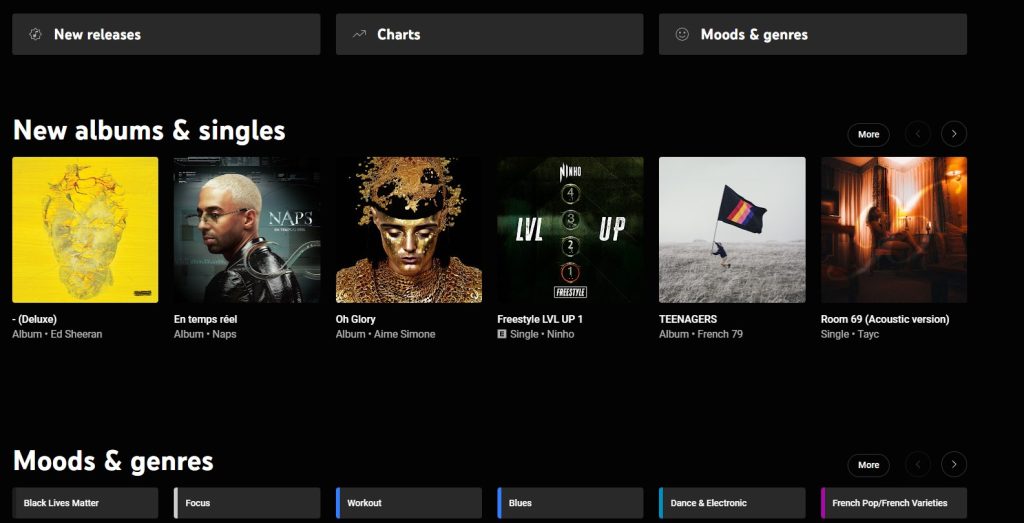
That could soon change, which is why Soundiiz has chosen to take an interest in YouTube Music: the platform is making waves and attracting more and more users.
Audio Quality
Let’s face it: YouTube Music and Spotify have a long way to go regarding audio quality. Audiophiles will prefer Amazon Music or TIDAL, there’s no doubt about it.
In this respect, Spotify has come in for a lot of criticism. The Hi-Fi feature has been announced for months and months, but people have yet to taste it. As a consolation, Spotify offers audio quality equivalent to 320 kbps, versus 256kbps for YouTube Music.
Let’s hope Spotify unlocks some features in the coming months: as the market leader, it’s a shame that it doesn’t try to offer a more qualitative listening experience. The risk? Subscribers are turning to Qobuz or TIDAL, two more advanced services in this area. They also outperform YouTube Music in this same area.
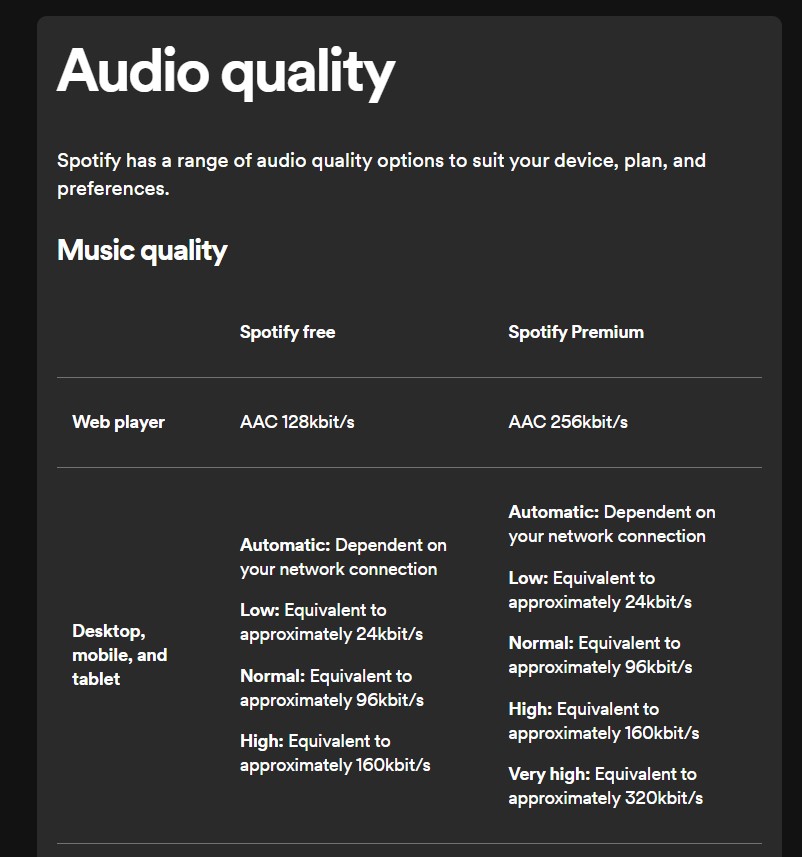
In conclusion, Spotify and YouTube are not at the top of their game regarding audio quality, but Spotify still manages to come out on top.
Winner: Spotify.
User Experience & Algorithms: which to choose between YouTube Music and Spotify?
It’s simple: every time we do a “Versus” involving Spotify and talk about its algorithm, a streaming service rarely manages to dethrone the Swedish giant. For the simple reason Spotify has made massive investments in this area, knowing that offering an optimal user experience and a music recommendation system tailored to individual tastes could be one of the keys to the company’s success. And they were right!
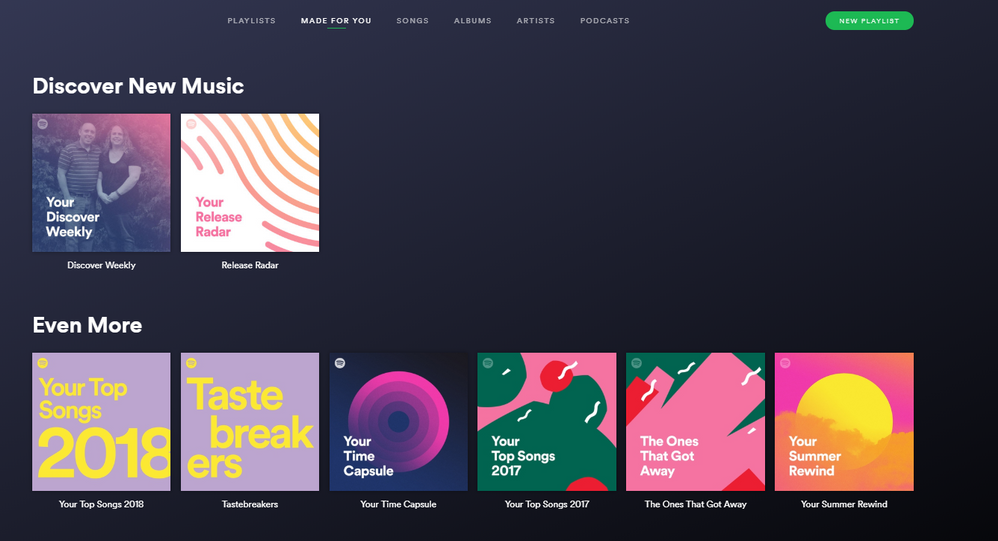
We’ve drawn on a wealth of user feedback to write this section, most of which highlights that Spotify’s recommended playlists and albums are among the best on the market. These recommendations are also prominently displayed on the application’s home page, making them one of Spotify’s main strengths. The famous Daily Mixes, which come in various forms, are very popular, and having tested them several times, there’s no doubt that they’re effective. With Spotify, even the most discerning music lover should be able to discover new artists!
Regarding user experience, things are more challenging to define and are a matter of individual perception. Recently, Spotify unveiled a new look for its application, heavily inspired by the navigation popularized by TikTok. While some praised the technological achievement, others were skeptical, to say the least, even virulent. We talked about all that in this article.
To compete with Spotify in terms of algorithms, YouTube Music relies on the power of Google, which has no equal. The service can see when you use YouTube Music and showcase playlists aligning with your mood.
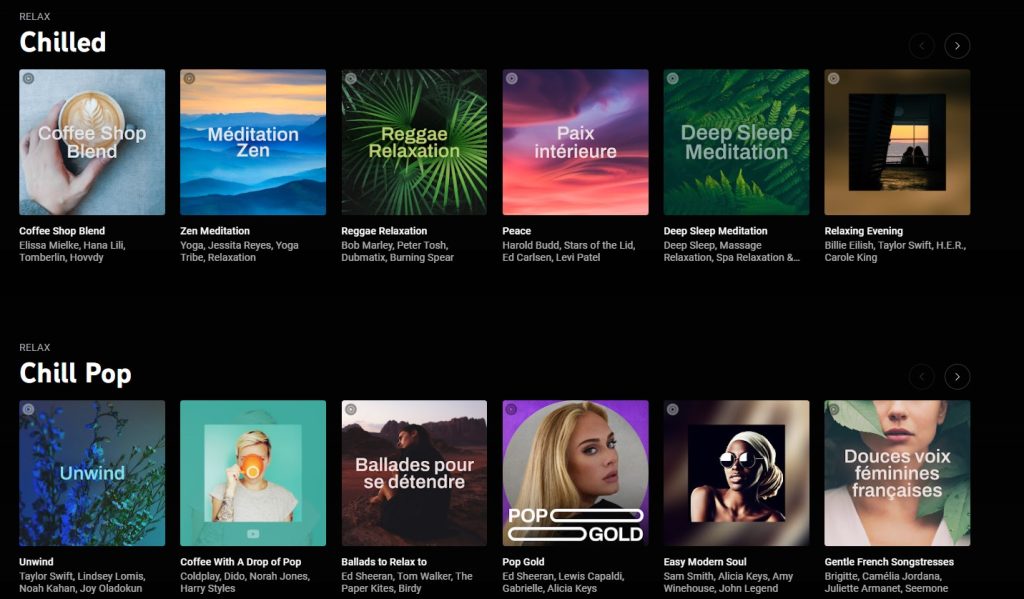
But perhaps Google is a little too “lazy” in this area: the Playlists proposed by the application are certainly relevant to specific situations of the day but seem less adapted to actual listening habits than those of Spotify.
Winner: Spotify
Price & Subscription
– (as of july 2023) –
It isn’t easy to compare the two services in terms of price. Both offer a variety of options.
YouTube Music can be used without paying a single dollar but with advertisements. Spotify also offers a free service. A good point for both platforms is as Apple Music, for example, does not offer a free version. If you’re not afraid of ads, you can test both services for as long as you like!
If you’d like to subscribe to a Premium version, whether YouTube Music Premium or Spotify Premium, you can enjoy one and two months free, respectively.
A good idea would be to test both services and, at the end of each trial period, back up your playlists on Soundiiz. Here is how to do it from YouTube Music or Spotify.
Premium offers
YouTube Music Premium offers a consistent and balanced package at $9.99 monthly for an individual subscription. It costs $14.99 monthly for a subscription that allows six different people to use the same subscription.
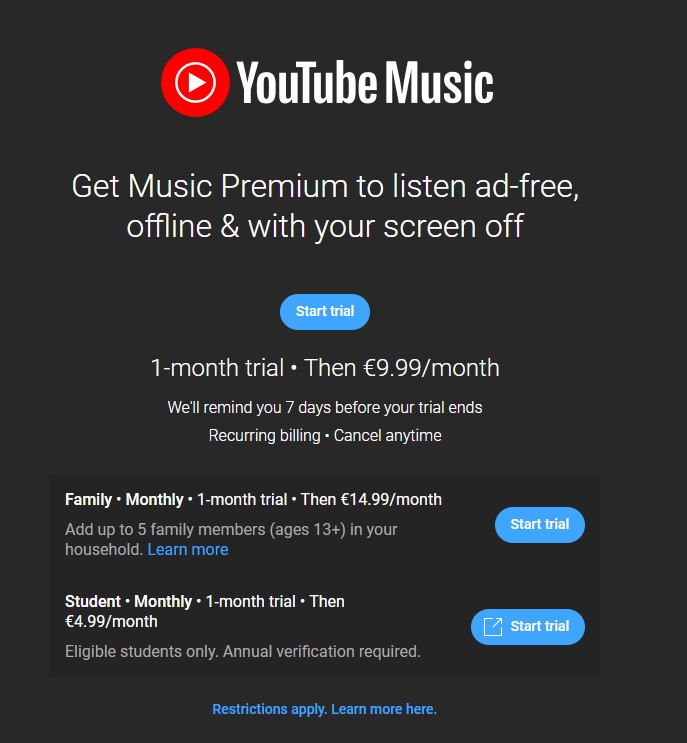
If you take out a YouTube Music Premium subscription, you can enjoy YouTube Premium for an extra $2 a month. What’s in it for you? It removes the multiple ads you’re forced to watch for a few seconds before being able to skip them when viewing a YouTube video.
YouTube Music Premium is an extensive offer, which could be a perfect solution if you’re a big YouTube consumer!
Spotify Premium, on the other hand, offers a very flexible package. An individual subscription, with a two-month free trial, costs, since July 2023, one extra dollar than a personal subscription to YouTube Music Premium. Did YouTube take advantage? Sounds like it! Spotify explained in this blog article why they had to up their premium prices.
But what sets Spotify apart is that it offers something for every user, whether you’re a student, a couple, or a family. There’s something for everyone!
For more details on these offers, please see the price list below. YouTube Music Premium offers a family and student plan but not a duo one.
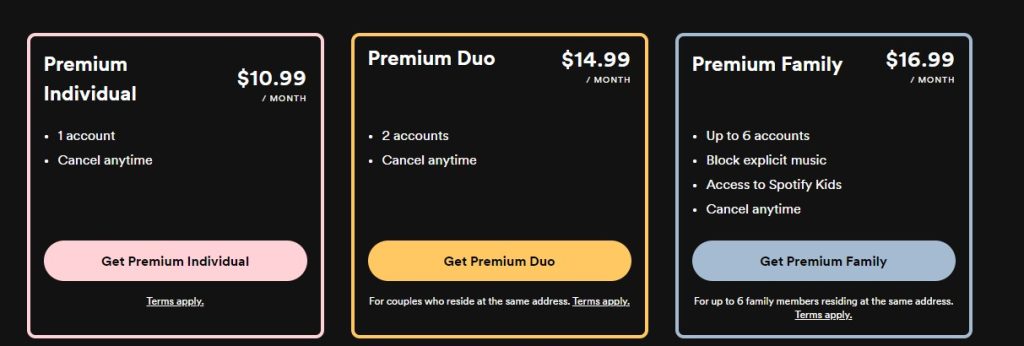
Winner: Two weeks ago, we would have chosen Spotify as the winner, but since they upped their premium prices, YouTube Music Premium may have taken advantage! It you want to use YouTube without ads, YouTube Music Premium may now be a better solution than Spotify.
Catalogs: which to choose between YouTube Music and Spotify?
– (as of June 2023) –
Spotify is also the service with the most balanced and varied offering. While YouTube Music has nothing to be ashamed of regarding the number of songs available in its catalog, the platform lags far behind when it comes to podcasts. And from experience, since most users will find all the music they’re looking for on any streaming platform, it’s “outside” the music that makes the difference.
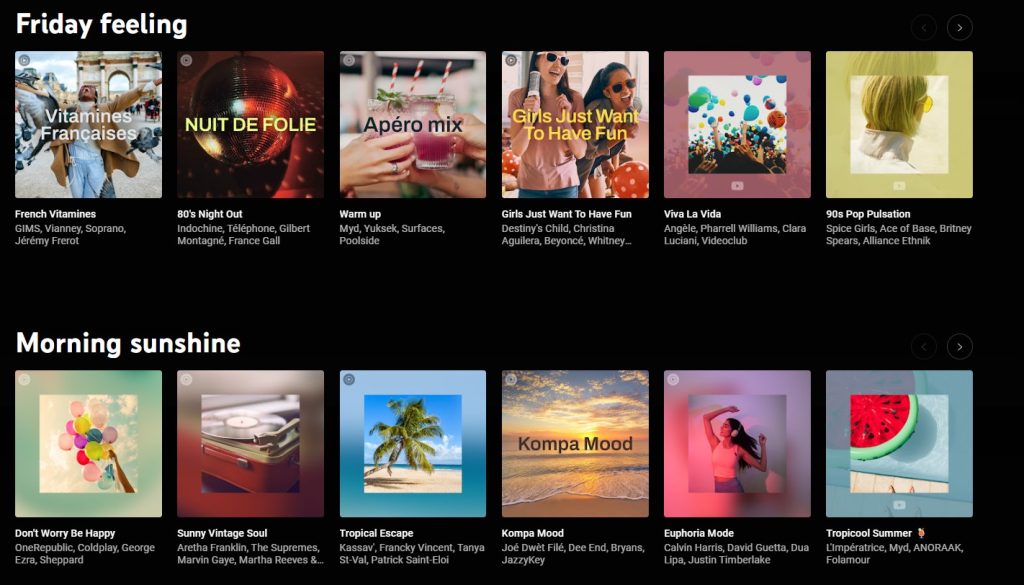
Today, following massive investments worth millions of dollars, Spotify is the undisputed leader in providing podcasts. It’s simple: you can find almost anything on Spotify. With over 3.5 million podcasts, you should be able to listen to your favorite shows without a problem!
YouTube Music still needs to get the clout to compete with Spotify.
Winner: Spotify
YouTube Music VS Spotify: Let’s wrap it up
It’s hard to compare YouTube Music and Spotify. It’s almost unfair to YouTube Music, which is still relatively young, has been slower to develop than Spotify, has less industry experience, and is present in fewer countries than its rival.
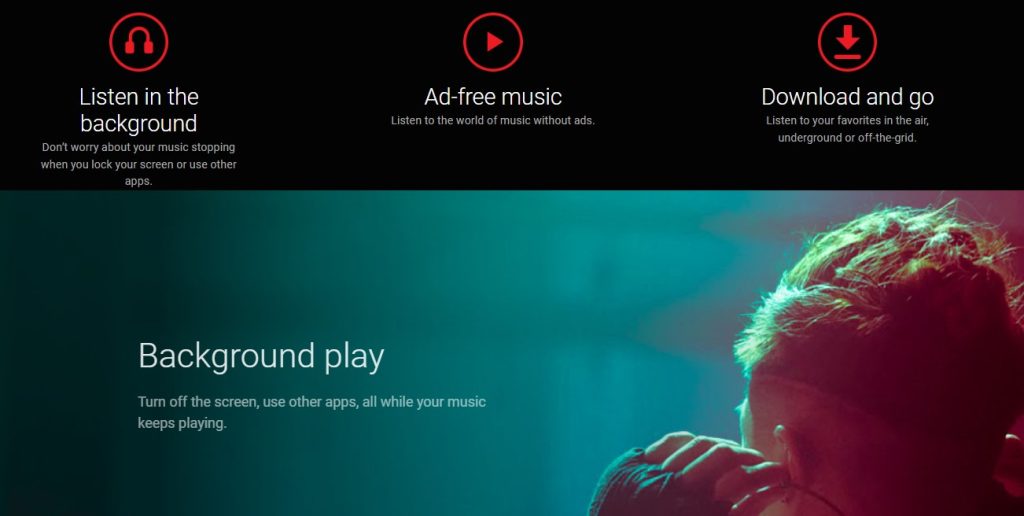
Spotify is a complete solution, with a better recommendation system and a more versatile price range. And if audio quality is your property, you’ll have to turn to Spotify. Nevertheless, in its Premium version, YouTube Music is a serious and increasingly credible competitor in the streaming world. As the famous saying goes, if YouTube Music manages to fine-tune its algorithm, the sky’s the limit.
Spotify’s advantage, then, but for how much longer? YouTube Music is coming, and coming hard!
Soundiiz: Transfer your playlists from one music service to another
One of the main things that could prevent you from changing your music streaming platform is losing all your music collection, including your playlists, favorites albums or tracks, and followed artists. And having to rebuild this library with a new service could be time-consuming and even impossible, depending on the size of your collection.
Soundiiz solves this by doing an advanced matching process, allowing you to move quickly and with no effort from Spotify to YouTube or from Spotify to Amazon, for example! And then keep your playlists updated by using the playlist Synchronisation feature.

When you unsubscribe from a streaming service, your data and playlists can be deleted. Using Soundiiz, you create backups of your YouTube Music playlists as CSV or backups of your Spotify playlists as CSV. Convenient!

To sum everything up, Soundiiz allows you to subscribe to YouTube Music Premium and Spotify without losing your data. Interesting, isn’t it? And since Spotify upped their premium prices, a lot of you may want to switch to YouTube Music Premium: Soundiiz makes it possible!
So go ahead, sign up for a thirty-day trial, once with Youtube Music, once with Spotify, and choose!



